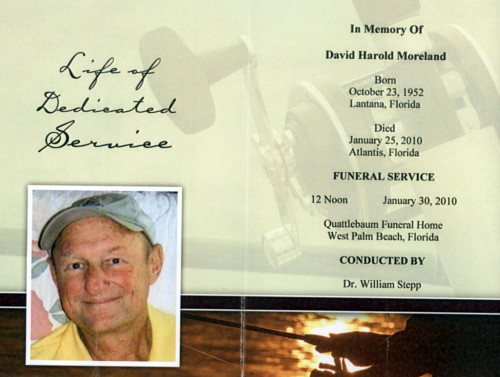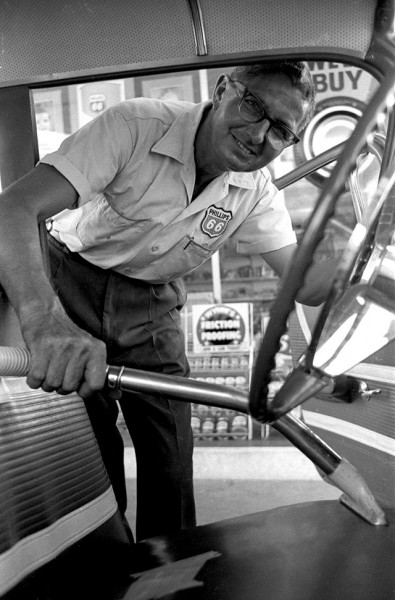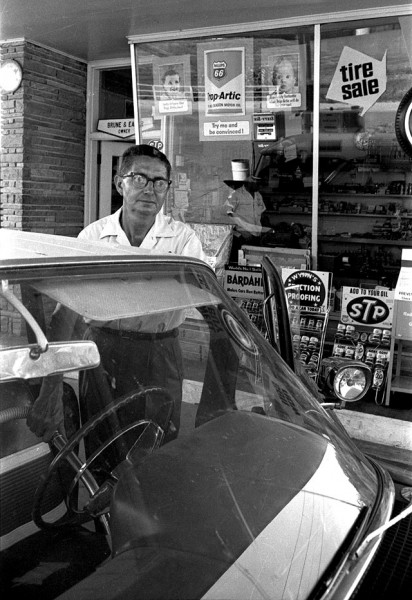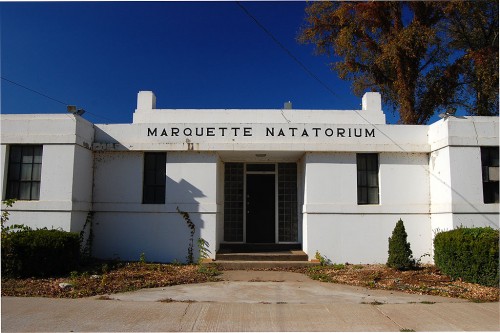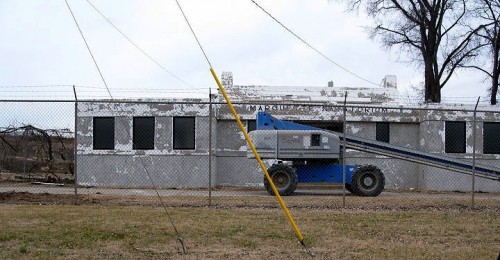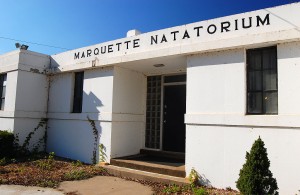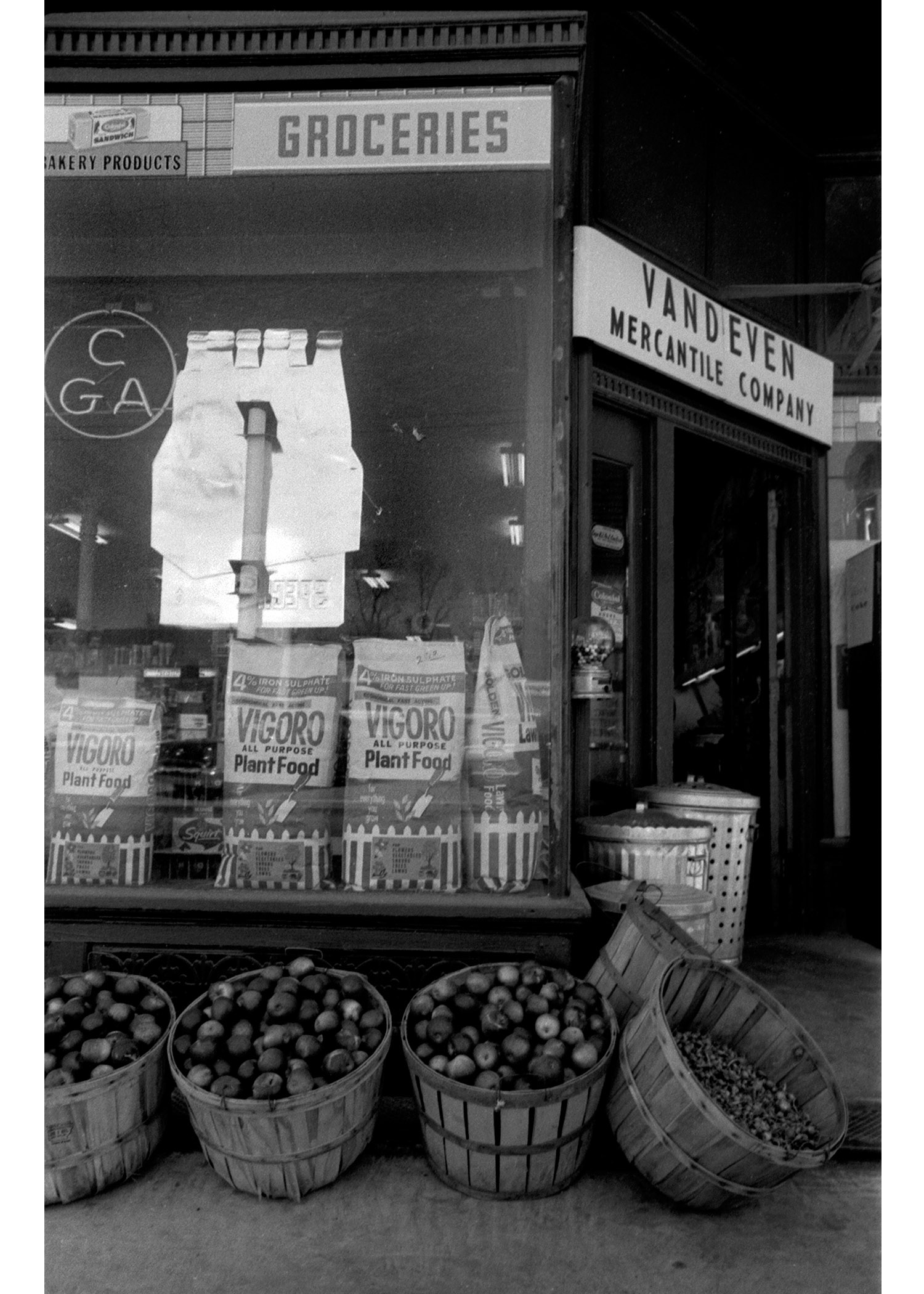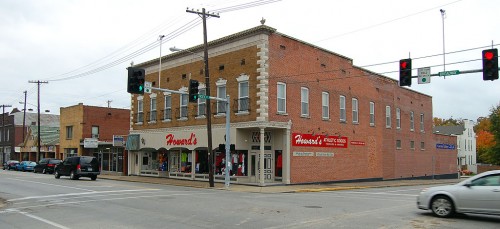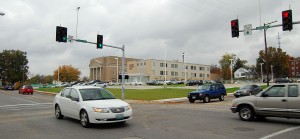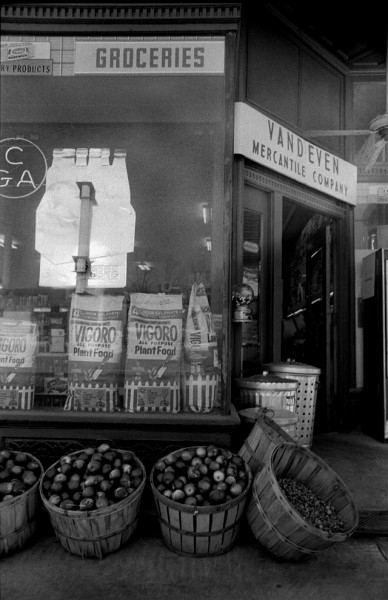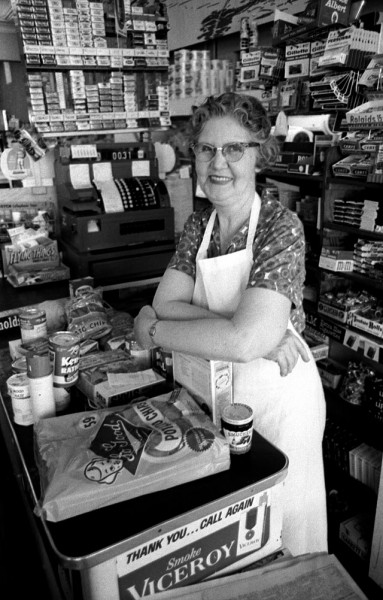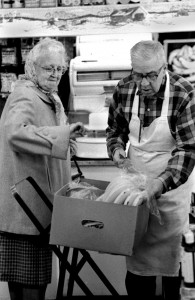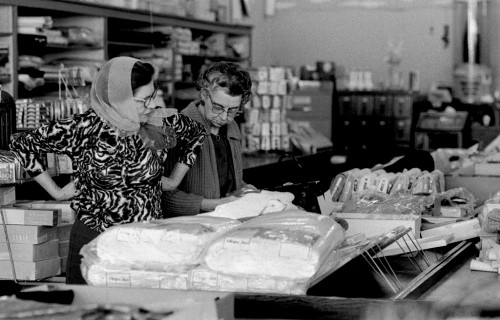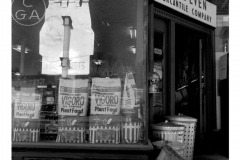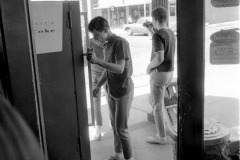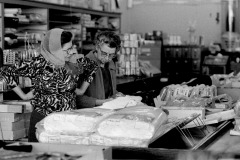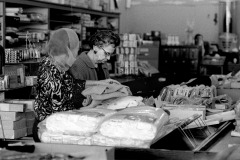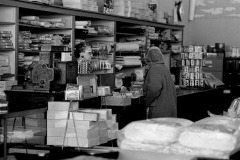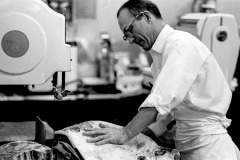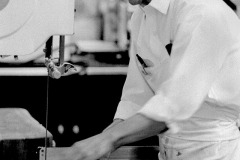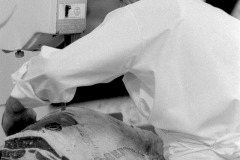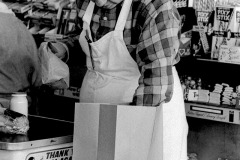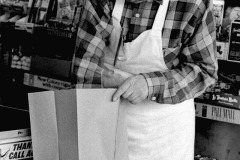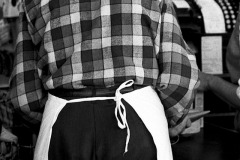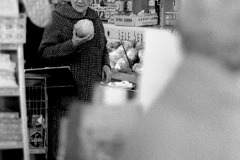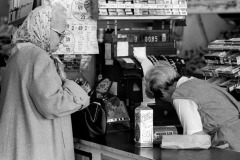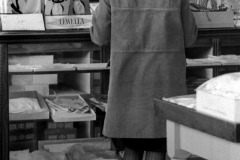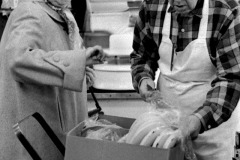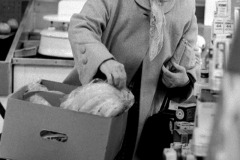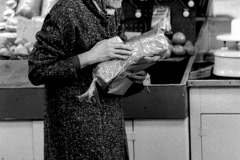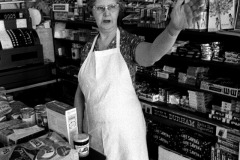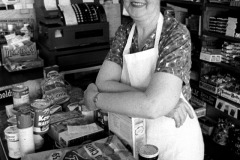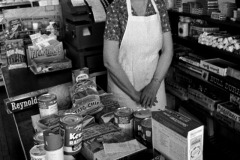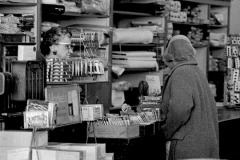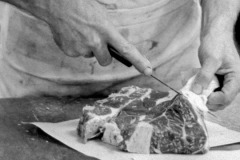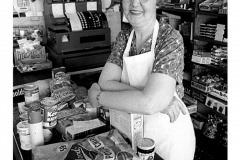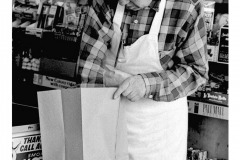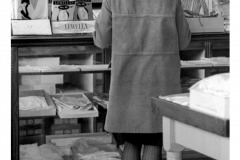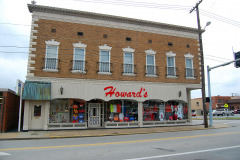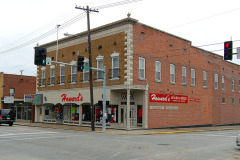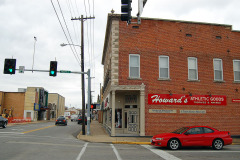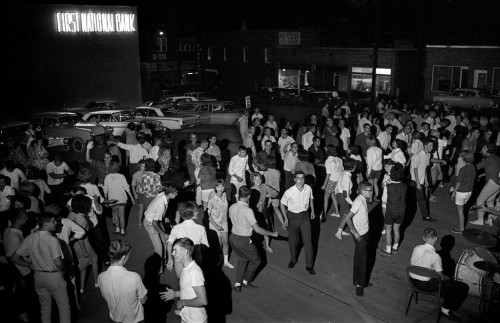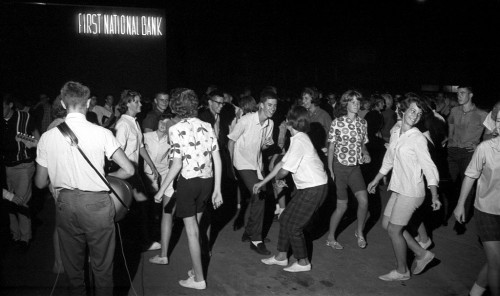I went to a funeral for Dave Moreland this morning.
It was in West Palm Beach, not Cape Girardeau, but there’s a reason I’m writing about it in connection with these pictures from Cape.
Dave owned Dave’s Texaco (Southend Texaco) for 24 years and had worked there since he was 16. He died of cancer, Jan. 25, at age 57. The station was within a few blocks of our home and we’ve been dealing with Dave and his family almost as long as we’ve been in Florida.
Over a hundred friends were seated for the service, and more than 100 others spilled out into a standing-room only lobby where we wished we’d had some of those old-fashioned funeral home fans to beat off the heat.
Dr. Willam Stepp, a minister who hailed from a small town in Mississippi, spoke of Dave as a customer, friend and fishing buddy. I’ve been to too many services where the officiant could barely pronounce the name of the guest of honor. This was certainly not one of those cases.
“Dave’s wasn’t a service station, it was an institution”
Dr. Stepp told story after story of how Dave lived his philosophy that it wasn’t a car he was serving, it was the PERSON in the car. He would realize that an elderly customer hadn’t been into the store recently and would send someone to check on them. “Dave was a hard-working, honest-to-the-core, get-it-done kind of guy.”
Framed collages of photos of friends and family filled the funeral home lobby. In every one of them and in a video that was shown as part of the service, there was a red-headed guy wearing an infectious grin that just had to make you feel good.
Lila and I and hundreds of his customers are going to miss Dave.
Back before gas stations, there were SERVICE stations
I like this picture from Cape Girardeau because it brings back memories of when service stations actually provided service. You didn’t just pull up at a pump, stick in a credit card, pump your gas yourself and drive off without ever seeing a human being.
You’d pull into a service station and as soon as your tires ran over a rubber hose sensor that rang a bell, one or more – sometimes uniformed – gas station attendants would come running 0ut. They’d check your tire pressure, pop your hood to check fluid levels and pump your gas. In some cases, like this one, someone would actually vacuum your car.
On top of that, your fill-up could earn you prizes and premiums. In a cabinet in my Mother’s kitchen are some colored aluminum tumblers that came from a service station. They were great for iced tea; the condensation running down their sides always made the drink SEEM colder.
George W. Eaker, Sr., at Brune & Eaker Phillips 66 Station
Like so many of my pictures, I had no clue who the attendant was, when it was taken or where. I DID notice in the background a sign that said that BRUNE & EA??R were the owners, so I reached out for Brad Brune. He put me in touch with George Eaker, Jr, who filled in most of the gaps with this message:
I have a mother who confirmed the information in this letter. Her name is Lora Lee Eaker, the wife of the late George W, Eaker Sr..
My mother is a tender 92 years old. My mother’s mental faculties have not diminished any with age.
I personally remember the day you took the photographs of my father as I was at the service station while you photographed my father. The photographs where taken at my father’s place of business, Brune and Eaker, 915 North Main in Cape Girardeau, MO. You took the photographs sometime in the spring of 1959. [Editor’s note: it couldn’t have been in 1959, I was only 12 then. It had to have been taken some time between 1963 and 1968.]
The reason for you taking the photographs of my father was to publicize the fact that my father had received an award from Phillips Petroleum Company (Phillips 66), for performing services to the mystery motorist.
The Mystery Motorist
The mystery motorist would be a customer that came in to a service station unannounced. The service station attendant had to follow the standards established by Phillips Petroleum for excellent customer service. The mystery motorist would always be a person unknown to the service station personnel. This unknown motorist was normally a traveling salesman who would be passing through the area on business.
The customer service program established by Phillips Petroleum included a greeting to the customer that included a suggestion to purchase Flight Fuel, the premium grade of gasoline sold at Phillip 66 service stations.
While dad was fueling the customer’s automobile, he was expected to clean all of the windows on the vehicle. Then he would check under the hood for the level of oil in the crankcase and the condition of key engine elements while the hood was open. The attendant then was expected to check the air in all of the customer’s vehicle tires.
Vacuum cleaners installed on fuel islands
Part of the promotion, that Phillips Petroleum instituted at their outlets, was to have their dealers install vacuum cleaners on the fuel islands of their service stations. My dad then vacuumed the front and rear of the customer’s car. Of course, after all this service, the attendant was expected to thank the customer for his business and invite them to visit our facility again.
After receiving all of the steps outlined by the Phillips Petroleum customer policy, the unknown motorist informed my father that he was the unknown motorist employed by Phillips Petroleum Company. Dad received a certificate of recognition from Phillips Petroleum and a monetary award of seventy five dollars. Seventy five dollars was a large monetary award in 1959.
Brune & Eaker opened in 1933
My father was in business with his partner, Louis (Louie) Brune, at 915 North Main Street from 1933 until Mr. Brune passed away in 1965. My dad remained in business until 1966 when he sold the business. In all the years that Mr. Brune and my father owned and operated their business, they were dealers for Phillips Petroleum Company.
Brune and Eaker Service Station was much more than a gasoline station. Normally Mr. Brune and my father worked daily at the station. The majority of the time there would be two to three mechanics employed that preformed all types of car repairs. Several young men worked the fuel islands, washed cars, changed tires and other light vehicle service.
Those who lived in the Red Star District remember that the Brune and Eaker service station was, in fact, two service stations. The original building was a small one-room building that had been added onto several times. After all of the construction, the building contained an additional two bays. One of the bays contained a hydraulic lift, plus there was a large outdoor hydraulic lift for trucks.
Main Street was moved, new station built
When the levee system was built in Cape Girardeau, Main Street was rerouted behind the original service station. A new service station had to be built to the rear of the original building. The new station contained a large office area and two new service bays, one with a hydraulic lift. A walkway connected the two building, resulting in a large work area.
The letter written by Brad Brune spoke of several other Eakers.
Orville (Peg) Eaker was the brother of my father, George Eaker Sr. Long-time residents of Cape Girardeau would remember Peg Eaker and his wife, Toots, as the owners of The Town Pump restaurant and bar on Main Street in downtown Cape. Jim Eaker was the son of Peg Eaker. Jim Eaker and his wife, Jean, ran the Town Pump for a short time.
The other Eaker mentioned in the letter was Eldon (Dib) Eaker. Dib was also a brother of George Sr. and Peg Eaker. Dib ran a business in Cape Girardeau for several years and was later employed by the city of Cape Girardeau for many years.

